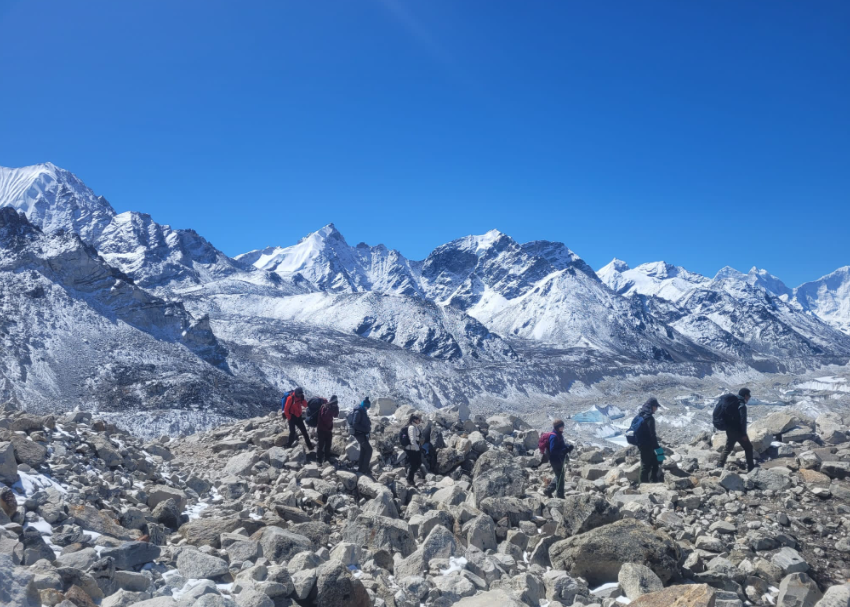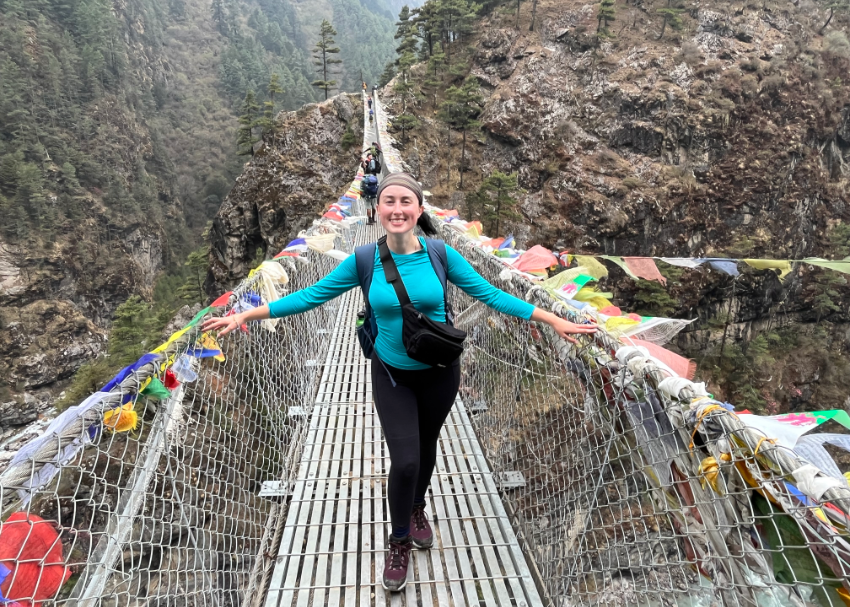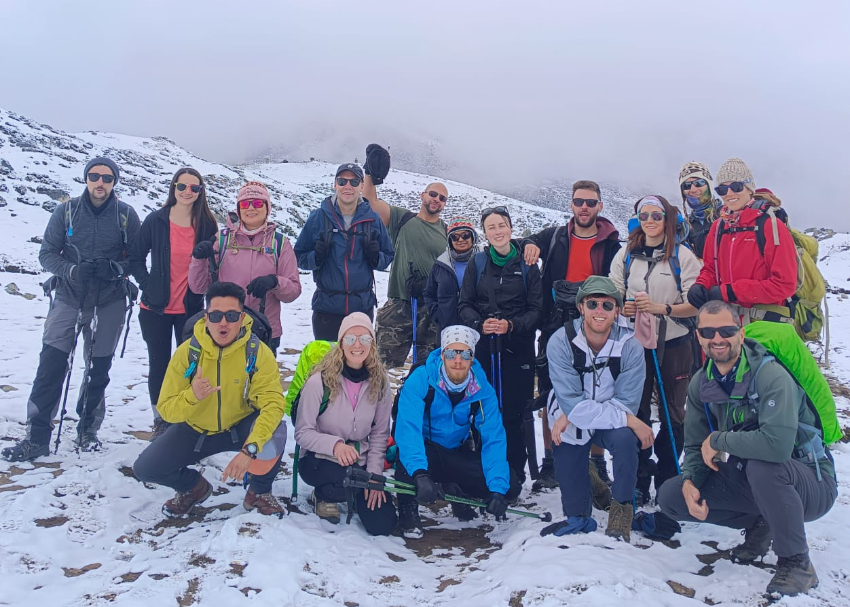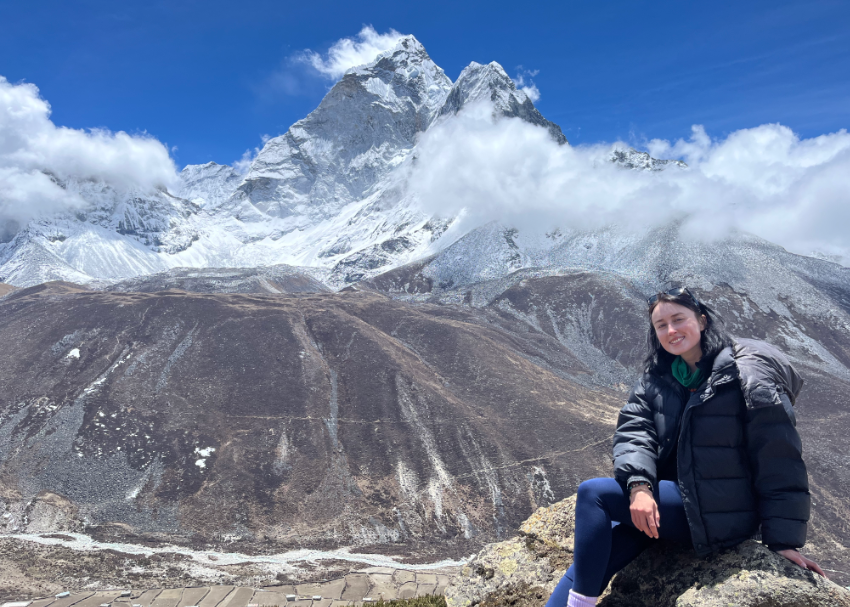'Are you going to do Everest Base Camp?' people asked when I said I was travelling to Nepal to trek. 'Oh, I doubt it,' I would reply, amused that people thought I, someone with no trekking experience from a sea level country, could hike towards the world's highest mountain.
After some research, I learned that no mountaineering experience is required to trek Everest Base Camp, and considering myself a relatively fit person, I booked my place on an upcoming trip.

This turned out to be one of the best decisions I have ever made. Yes, it was both mentally and physically challenging. There were many sore joints and stiff muscles, and more than one tear shed as the tiredness gradually wore me down, but the feeling of accomplishment made it all worthwhile.
If you are thinking of taking on this challenge, you likely have many questions running through your head. Can I physically do it? What should I bring? Do I need fancy new hiking boots? To make your trip easier, here are five Everest Base Camp tips I wish I knew before making the trek.
1: Don’t underestimate the altitude
No matter how fit you are at sea level, the high altitude levels that come with trekking to Everest Base Camp put your body through a completely new challenge. Parts of this trek are quite deceiving to the eye, and the appearance of more gradual ascents on the route can give people a false sense of security.

Try not to become complacent. You may be able to walk 1km or a mile uphill at sea level with ease, but that same journey at high altitude leaves you feeling like you're wading through sludge. Getting overconfident and moving too fast can result in serious altitude sickness, forcing you to abandon your trip. Take your time and pace yourself, and you should complete the trek with relative ease. Our Chief Experience Officer prepped us by demonstrating a safe walking pace so that none of us overexerted ourselves.

Even with acclimation many trekkers feel altitude sickness, which can bring on nausea and headaches. Medication is available to lessen these symptoms, which made things easier.
2: Bring suitable footwear
As you spend a large chunk of time on your feet, from stone steps and rocky trails to snow and ice, your footwear has the power to make or break this trip. A pair of waterproof hiking boots are needed for the trek, and most importantly, should be well worn in to avoid unwelcome blisters.

Your feet will beg for freedom by the end of each day, so a pair of flip-flops or slides are ideal for relaxing in the hostel, giving yourself a well-earned break from your boots.
3: Support is all around you
Before this trip, my experience trekking at high altitudes was non-existent. Ahead of meeting my fellow G Adventures trekkers, I was nervous that they’d be seasoned pros and I’d be left, quite literally, behind.

My fears were unwarranted though, as I soon learned that the majority were as inexperienced as me, and equally anxious about the task ahead. Everyone had their challenging days, no matter their fitness level, and thanks to our newfound connection, we were all quick to help each other out.
4: Pack for every weather
You’d be forgiven for presuming that a trek to Base Camp involves exclusively freezing temperatures. Surprisingly, we felt all four seasons throughout our trek. While you’ll want cozy, well-insulated down jackets and woolly hats in the morning and at night, you’ll likely peel things off as you build up a sweat. Plus, you’ll need waterproof pieces for any rainfall.

The key is to bring plenty of layers so you can quickly adapt to changing weather conditions, while staying comfortable.
5: Avoid high mountain prices
Transporting goods to locations in the mountains is a long and expensive task, with helicopters and yaks serving as the main mode of transport. Basic items like toilet paper, baby wipes, chocolate bars, and other snacks gradually get more expensive throughout the trek.

Long days trekking will leave you craving snacks, so stock up before you leave Kathmandu to avoid forking out extra money. Some lodges have fees for charging phones and other electronic devices, especially as you get higher up the mountain, so portable chargers are incredibly useful.

Getting there
Now that you're prepped thanks to our Everest Base Camp tips, it's time to bring on this epic trek for yourself. Here's where to start:























